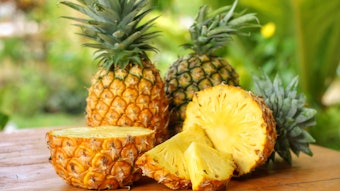Among the common household herbs and plants grown by Malaysians are Cymbopogon citratus (DC) Strapf. (Gramineae) and Pandanus amaryllifolius Roxb. (Pandanaceae). The two plants which are known by their local names as “serai makan” and “pandan” are grown in nearly every Malay compound, in either urban or rural areas. Both plants are used for flavoring and indispensable in traditional food preparations.
A few other less common herbs and plants are occasionally used as flavoring ingredients; we cite here one example, hitherto not examined before, Polygonum minus Huds. (Polygonaceae). The herb is popularly known as “Kesom” or “Senahun” and its uses are more localised within the various states of the Peninsular or East Malaysia. The entire herb is strongly aromatic. In order to use the herb as a flavoring ingredient, the leaves are cut into small pieces and are subsequently dispersed into foods or noodles. Sometimes the leaves are blended with other common spices and the mixture used as a stuffing ingredient for traditional foods.
The recent investigation of the plant habitats and the chemical analysis of the essential oils obtained from the leaves and stems provided some new findings that could prove highly useful to the flavour and fragrance industry. In this report the habitats of Polygonum minus Huds. and the chemical composition of leaf and stem oils are presented, and the possible relevance of Kesom oil as a new product is discussed.










